How it was born
To understand what marketing is, you need to know its history. The discipline of marketing was born in the 70s as a business function that has the purpose of identifying latent needs, expectations, desires, and behaviors of consumers, to be able to better serve them through the offer of products or services aimed at the markets in question.
The product or service offered is then effectively communicated to customers through messaging specifically designed to reach the desired target and retain them over time.
Initially, messaging was transmitted to consumers through traditional means of communication: television, print media and radio. Over time, marketing has increasingly merged with technology. This is why today we talk about digital marketing or MarTech, that is a fusion between marketing and technology.
Types of marketing
Based on the target and the characteristics of one's brand, it is possible to identify different types of marketing:
- Blog marketing: a very useful strategy that consists in sharing, offering food for thought and interesting content to your target on topics related to your business.
- Search engine marketing: type of paid marketing to ensure high exposure to your site or content, through the pay per click concept. It consists of a fee that the advertiser must pay, which varies in proportion to the clicks obtained on his ad.
- Press marketing: means relying on newspapers, magazines and printed material in general to promote your business. This type of marketing is often very expensive and nowadays not as effective as the dissemination of material online.
- Social media marketing: it is probably the most popular type now, thanks to the important returns in terms of lead generation, and more. It consists in making use of the most suitable social media for your business to create valuable content, share it and establish a link with your target, based on online communication.
- Fairs and events: they represent a traditional method that still allows companies to get in touch effectively with their target. However, if used in isolation it is not as effective. The ideal situation would be to integrate strategies of this type with digital follow-ups, in order to support the creation of contacts obtained during the events, with attempts to consolidate these relationships.
What is marketing for?
Marketing objectives are normally aimed at increasing the customer base and therefore the turnover. To achieve this goal, each company must set itself intermediate objectives that vary based on the characteristics of its business.
In general, marketing objectives must be SMART, i.e.:
- Specific: the more specific a goal is, the easier it will be to identify the steps necessary to achieve it.
- Measurable: all objectives must be quantifiable and therefore measurable in a concrete way. For this reason, KPIs are often established, i.e., performance indicators, which vary according to the type of marketing chosen. If, for example, your strategy is to focus on digital, tools like Google Analytics can be extremely useful for monitoring the progress and quality of your online performance.
- Achievable (reachable) and Realistic (realistic): it is necessary to have a clear understanding of the situation of one's business and to define target objectives according to consistent timing, proportional to the difficulty of the objective.
- Time-based (quantifiable in terms of time): it is extremely useful to establish timescales within which to achieve the previously set objectives.
How has marketing changed over time
Over time, the way of marketing and promoting your business has changed. In particular, the strategy with which advertising messages are sent to the intended users has changed. In the past, the preferred method was the one based on the interruption of the consumer's attention to offer them the sale of one's product, typically through television commercials or radio adverts in which the qualities and properties of one's product or service were renowned.
This method of marketing based on the interruptive model is also called outbound marketing and consists in the creation of standard, passive content aimed at a general audience, with messages aimed at selling.
It is also called push marketing, precisely because the advertising model is based on "pushing" the consumer to suddenly pay attention to their advertising content, inciting them to buy.
Over time we have moved from an outbound method to an inbound method based on the "pull" technique, therefore that of attracting consumers by leveraging a latent need of the target. This technique makes consumers feel interested in your business, seeing you as a valid solution to their problem.
This strategy puts the customer at the center and normally focuses on a decidedly smaller target than the one taken into consideration in outbound, giving more value to quality rather than quantity.
Inbound marketing also focuses on building a captivating storytelling of your brand, which induces consumers to want to know more. The brand is no longer perceived as a simple seller, but as an authoritative source from which to learn and draw knowledge.
There is no single solution
In marketing, there is no right and wrong solution. Very often it is necessary to consider a set of variables which, when evaluated as a whole, suggest the choice of one strategy rather than another, or both. Knowing what marketing is, is a good starting point for building a strategy.
Each marketing strategy has its own strengths and weaknesses. For this reason, relying on a digital marketing agency is extremely important to understand which path is more suitable and more consistent with your business.
We at Ekeria take care of this: assisting our customers from the birth of the strategy to constant monitoring for guaranteed success. Contact us for a free consultation!
.webp)


